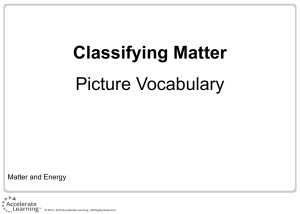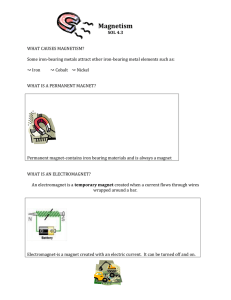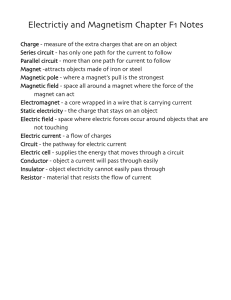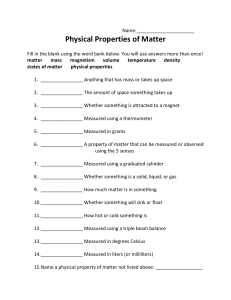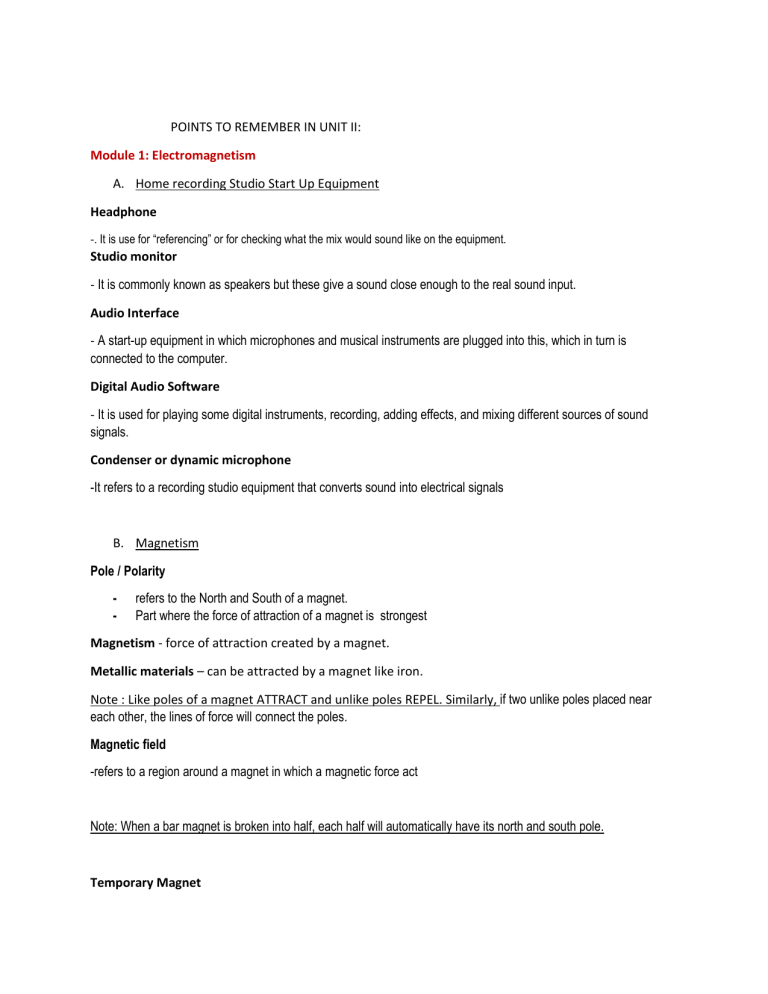
POINTS TO REMEMBER IN UNIT II: Module 1: Electromagnetism A. Home recording Studio Start Up Equipment Headphone -. It is use for “referencing” or for checking what the mix would sound like on the equipment. Studio monitor - It is commonly known as speakers but these give a sound close enough to the real sound input. Audio Interface - A start-up equipment in which microphones and musical instruments are plugged into this, which in turn is connected to the computer. Digital Audio Software - It is used for playing some digital instruments, recording, adding effects, and mixing different sources of sound signals. Condenser or dynamic microphone -It refers to a recording studio equipment that converts sound into electrical signals B. Magnetism Pole / Polarity - refers to the North and South of a magnet. Part where the force of attraction of a magnet is strongest Magnetism - force of attraction created by a magnet. Metallic materials – can be attracted by a magnet like iron. Note : Like poles of a magnet ATTRACT and unlike poles REPEL. Similarly, if two unlike poles placed near each other, the lines of force will connect the poles. Magnetic field -refers to a region around a magnet in which a magnetic force act Note: When a bar magnet is broken into half, each half will automatically have its north and south pole. Temporary Magnet – happens when a nail can pick up a paper clip after it touches a magnet. Note: *When a bar magnet is often dropped, it loses its magnetism. *Attraction between permanent magnet and induced magnet happen after magnetic induction C. Electromagnetism - Electricity and magnetism If a bar magnet is moved in and out of a coil of copper wire, electric current will flow through the wire MODULE 2: The Electromagnetic Spectrum Notes: In the electromagnetic wave, the direction of the propagation of the wave is perpendicular to the electric and magnetic field directions. All electromagnetic spectrum have the same speed through a vacuum. electromagnetic waves in the order from the longest to the shortest wavelength: RADIOWAVES MICROWAVES INFRARED RAY VISIBLE LIGHT ULTRA VIOLET (UV) RAY X--RAY GAMMA RAY The speed of the electromagnetic wave in a vacuum is similar t the speed of light which is 3 x 10 8 X-rays and Gamma rays –lies at the ends of EM Spectrum Visible Light – the only EM wave that can be seen by the human eye. Radio waves- have the widest frequency range and are used for radar signals and communication. 4 x 10 14 - 7.5 x 1014 Hz is the range of frequencies are our eyes sensitive to. 3 x 10 8 m/s is the value of speed of light or EM waves. MODULE 3: Mirrors and Lenses A. The Human Eye: Cornea - . It allows the passage of light into the eye and it also focuses the light. Retina - It refers to the parts of the human eye that converts light waves to electrical signals Sclera - A tough white skin made of tissue that covers all of the eyeball. B. Mirror Convex mirror- A kind of mirror is used in automobiles and trucks to give the driver a wider area and smaller image of traffic behind; also used in department stores. Concave mirror- A type of mirror do dentists usually use to see clearly the images of our teeth

